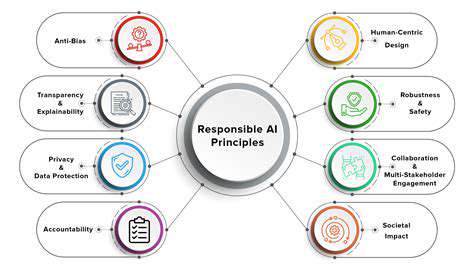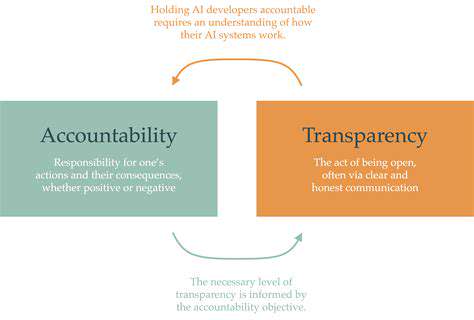Teaching Your Cat to Respond to Their Name
Beyond Treats: Utilizing Other Positive Reinforcement Methods
Beyond the Tempting Treat: Shaping Desired Behaviors
While treats are a fantastic tool for immediate reinforcement, relying solely on them can limit your cat's understanding of the desired behavior. Using a combination of positive reinforcement methods, such as praise, petting, or even a favorite toy, allows your cat to connect the action with a positive experience beyond just the immediate reward. This broader approach helps build a stronger association and encourages more consistent performance of the desired behavior, even when treats aren't available.
Shaping involves rewarding successive approximations of the desired behavior. For example, if you want your cat to sit, you might first reward them for lifting a paw, then for holding their paw up, and finally for sitting. Each step, no matter how small, is reinforced until the final behavior is achieved.
Verbal Cues and Positive Associations
Cats, though not as vocal as dogs, are surprisingly receptive to verbal cues. Using consistent, clear words or phrases to mark desired behaviors, such as good kitty or sit, creates a positive association and helps them understand what you're asking. Pairing these verbal cues with physical rewards, such as petting or a favorite toy, strengthens the connection.
The key is consistency. Use the same words and tone each time you want the behavior. This helps your cat learn to associate the words with the action and the reward that follows.
Utilizing Playtime as Reinforcement
Cats are naturally motivated by play. Integrating play into your training sessions can be a highly effective positive reinforcement method. When your cat performs a desired behavior, immediately engage in a brief play session with a favorite toy. This creates a strong link between the action and the fun, motivating them to repeat the behavior to access more play.
High-energy play sessions can be used as rewards, and incorporating toys into the training session can make the experience more enjoyable, turning training into a fun activity for both you and your feline companion.
The Power of Strategic Placement
Cats are creatures of habit and often gravitate to specific areas. By strategically placing resources, like food or toys, in areas where you want specific behaviors to occur, you can subtly guide your cat's actions. This method works in conjunction with other positive reinforcement techniques, allowing your cat to associate the area with rewards and positive experiences.
Environmental Enrichment for Motivation
A stimulating environment plays a crucial role in keeping your cat engaged and motivated. Providing various climbing structures, scratching posts, and interactive toys within their space can keep them mentally and physically engaged, reducing the need for disruptive behaviors. This positive environment makes training more enjoyable and effective, as your cat is more likely to participate in a positive learning experience.
Recognizing and Rewarding Natural Behaviors
Cats have natural behaviors that you can utilize to your advantage. For example, if a cat naturally loves to bat at objects, you can use this interest to encourage specific behaviors like gentle play with a toy. By recognizing and rewarding behaviors that are already inherent to your cat, you can create a positive and motivating training experience.
This approach is particularly valuable because it taps into your cat's natural instincts, making the training process more fun and less stressful for both of you. It also allows your cat to feel a sense of accomplishment by engaging in activities they already enjoy.
Patience and Consistency: The Cornerstones of Success
Training a cat, just like training any animal, requires patience and consistency. Your cat won't always grasp the concept immediately, and setbacks are inevitable. Maintain a positive and encouraging attitude, adjusting your approach as needed. Consistency in your training methods is paramount for your cat to understand what you're asking for.
Remember to celebrate small victories and keep the training sessions short and engaging. This will help maintain your cat's interest and prevent frustration on both sides. Positive reinforcement is key in building a lasting bond with your feline companion.
Patience and Persistence: The Long Game of Cat Training
Understanding Your Cat's Needs
Patience and persistence are crucial when training a cat, as they are inherently different from dogs in their learning styles. Cats are motivated by different things than dogs, and often respond better to positive reinforcement and avoidance of negative experiences. Understanding your cat's natural instincts, such as their need for exploration and independence, is essential to creating a training environment that fosters a positive relationship rather than one based on fear or punishment. A cat that feels safe and respected will be more receptive to learning new behaviors.
Recognizing your cat's individual personality and preferences is key to success. Some cats are more playful and eager to learn, while others are more reserved and require a gentler approach. Understanding these nuances allows you to tailor your training techniques to suit their specific needs, making the learning process more enjoyable for both of you.
Establishing a Routine and Consistency
Consistency is paramount in cat training. A predictable routine helps cats feel secure and understand what to expect. This includes feeding times, playtime, and designated areas for scratching or resting. Establishing a consistent schedule allows you to anticipate your cat's needs and adjust your training sessions accordingly, maximizing their effectiveness.
Positive Reinforcement: Rewards and Rewards
Positive reinforcement is a powerful tool in cat training. Rewarding desired behaviors, such as using a scratching post, coming when called, or exhibiting calm behavior, strengthens the connection between the action and the positive consequence. Use treats, praise, or toys as rewards, ensuring they are highly motivating for your cat. The key is to make the reward immediately following the desired behavior to reinforce the association.
Addressing and Avoiding Punishment
Avoid harsh punishments, as they can create fear and anxiety in your cat, potentially hindering their willingness to learn. Punishment can lead to a negative association with you and the training process. Instead, focus on redirecting unwanted behaviors to more acceptable alternatives. For example, if your cat is scratching furniture, provide a scratching post as an alternative and reward them for using it.
Patience and Persistence: The Long Haul
Cat training is a journey, not a sprint. It requires patience and persistence, as cats often learn at their own pace. Expect setbacks and remember that every cat is unique. Be prepared to adjust your techniques and strategies based on your cat's response. Celebrating small victories and maintaining a positive attitude are essential to keeping the training experience enjoyable for both you and your feline companion. Consistency over time is crucial for long-term success.
Read more about Teaching Your Cat to Respond to Their Name
Hot Recommendations
- Immersive Culinary Arts: Exploring Digital Flavors
- The Business of Fan Funded Projects in Entertainment
- Real Time AI Powered Dialogue Generation in Games
- Legal Challenges in User Generated Content Disclaimers
- Fan Fiction to Screenplays: User Driven Adaptation
- The Evolution of User Driven Media into Global Entertainment
- The Ethics of AI in Copyright Protection
- Building Immersive Narratives for Corporate Training
- The Impact of AI on Music Discovery Platforms
- AI for Audience Analytics and Personalized Content











